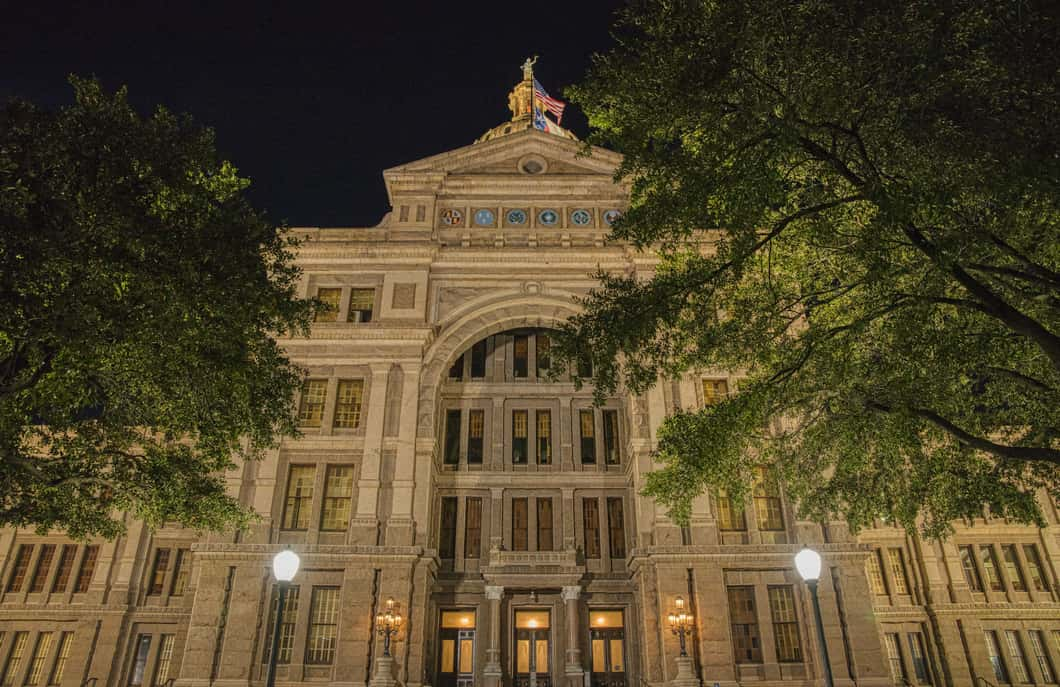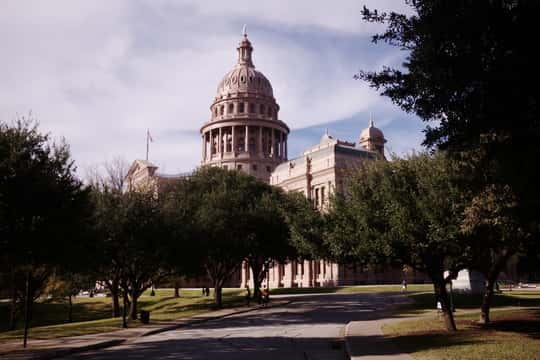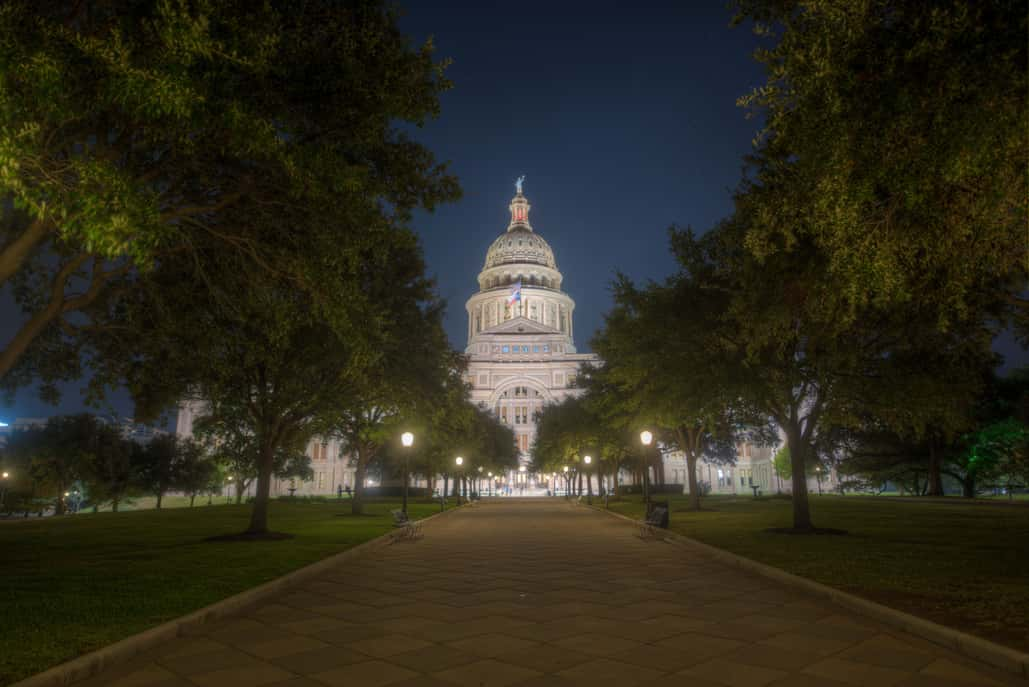The only thing scarier than a Texas politician is their poltergeist.
As the Most Haunted Capitol in the country, this building is brimming with poltergeists.
Commonly spotted in a suit and top hat, Robert Love is the Capitol Building’s most prominent specter. He’s stalked the haunt for the last one hundred years, frightening staff as well as passersby.
Another remains unidentified, though she’s commonly described as a young woman in a red dress. Spectators catch her stalking the building’s stairwell, awaiting to reunite with her beau.
Some even claim to witness the Spirit of Governor Edmund Jackson Davis.
Paralyzed by his piercing stare, those unfortunate enough to find this phantom never forget the encounter. They say he causes sudden temperature shifts and mysterious sounds.
You’ll know you’re near him whenever the temperature drops during Austin's sweltering summer days.

Robert Love’s tragic backstory began in 1903.
Robert Marshall Love was the State Comptroller at the time, and William G. Hill was his ex-employee. Love couldn’t have foreseen his fate whenever he welcomed Hill into his office.
Once he was inside, Hill handed Robert Love a letter. In the letter, Hill expressed his contempt for the way things had been operating at the capitol.
He’s quoted to say, Public offices are created for the service of the people and not for the aggrandizement of a few individuals.
Hill continued that, The man who, claiming to be a Christian deprives others of employment without a cause is a base hypocrite and a tyrant.
In the enclosing, Hill issued his threat. I cannot help myself, before laying life’s burden down, I shall strike a blow—feeble though it be—for the good of my deserving fellowman.
His final words written in all capital letters read, FOR THE RIGHT AGAINST THE WRONG. FOR THE WEAK AGAINST THE STRONG.
With the letter still in his hands, Hill pulled out a gun and shot Love two times in the chest. Yet it wasn’t long before Hill joined Love himself – after fleeing Love’s office, the Capitol’s chief bookkeeper struggled to apprehend Hill.
Hill ended up shooting himself accidentally.
Despite his tragic death, Robert Love is a cheerful spirit. His only ominous ongoings occur whenever he finds you alone.
They say that’s when he likes to share his final words: I have no idea why he shot me. May the Lord bless him and forgive him. I cannot say more.

In 1839, Austin was chosen to be the Capital of the Republic of Texas. Later in the same year, a log cabin was built to serve as the statehouse. These were humble origins for the country’s Most Haunted Capitol.
A little over a decade later, a second capitol was completed. This structure was made of limestone and was encircled by stone walls accented with trees and flowers.
Yet even with its embellishments, this capitol building would never compare to its predecessors.
The building was even once referred to as an "architectural monstrosity." All the flowers in the State of Texas couldn’t make the building appear suitable.
Texas came one step closer to a nicer capitol in 1880. After Texas launched a national architectural competition for the new Capitol, the winner was announced the following year. Architect Elijah E. Myers was chosen.
Construction of the new capitol began the following year. Yet shortly after workers started laying the limestone foundation, the atmosphere started to discolor the stone. The iconic Texas Sunset Red Granite was used instead.
While Myers' plans for the new Capitol were almost lost in a fire in 1881, they were rescued in the nick of time. The Texas State Capitol Building was completed by 1885.
This majestic, twenty-two acre spread is widely regarded as the country’s largest compound to house a capitol building.
In 1970, the building was listed on the National Register of Historic Places. In 1986, the building became a National Historic Landmark.

The cornerstone was laid on March 2nd, 1885 during a ceremony attended by government officials and civic leaders. The twelve-thousand pound cornerstone held a customary box containing a collection of items from the era.
In early May of 1888, over twenty-thousand people came out to enjoy a week-long event of festivities in honor of the new capitol. Some of the entertainment on hand included drill team competitions, concerts, and fireworks.
The people surrounded the capitol’s grounds for the official dedication ceremony. Senator Temple Houston, son of Sam Houston, was chosen to accept the new building on behalf of the State of Texas.
He was famously quoted to say, the architecture of a civilization is its most enduring feature, and by this structure shall Texas transmit herself to posterity.
The grand vision for the capitol’s grounds was much bigger than politics. It was to become a space for all the people of Texas. By the turn of the century, the grounds of the capitol had grown into its own.

The turn of the century brought even more beauty to the Capitol’s grounds. Two cast-iron fountains were added in 1905, and two lakes were formed five years later.
The lakes were accompanied by exotic plants and the less-than-exotic sea creatures, goldfishes.
During the mid-century, five state office buildings were constructed around the capitol to accommodate the need for additional space. While they were at it, they added more monuments, fountains, and sidewalks.
By 1990, the grounds of the capitol were showing noticeable signs of age. The once idyllic lawn was rugged and unkempt. The trees of the property looked like the leftovers of a Christmas tree lot.
The once highly touted monuments and fountains had fallen to negligence. Even the pathways were deemed barely usable.
In response, the State Preservation Board launched the process of restoring the capitol’s grounds. Some of the new improvements included a fire protection system, and a conserving irrigation system.
The following year saw more visible improvements, such as the restoration of the monuments and fountains. In addition, there was the replacing of the plants and trees that had succumbed to age and disease.
Hundreds of new trees and Texas native plants now took home on the grounds, reviving this historic space back to its splendor.

Over the last century, the Capitol Building has been a source of misinformation. For example, some say Confederate gold lies buried beneath the grounds. There’s no evidence this treasure exists, yet the tall tale flourishes.
Some also claim the crack on the star of the Capitol’s rotunda floor was created by the impact of Ed Wheeler’s fall. While this man did tragically fall to his death while painting the rotunda, he didn’t cause the crack. His fall occurred in 1922, yet the terrazzo floor was laid in 1936.
Wheeler’s death took place fourteen years before the floor’s installation.
The Texas State Capitol is now considered one of America’s favorite architectural icons.
In a 2008 poll taken by the American Institute of Architects, the Texas State Capitol building was even ranked the Number One Capitol in the Country.
Not bad for a building pushing 130 years of age.
You can find the Texas State Capitol Building at 1100 Congress Avenue. Tours are offered daily and are free to the public.

This cemetery is crawling with poltergeists.

Austin's Haunted City Hall

Get to know the history and ghosts of this haunted Austin landmark